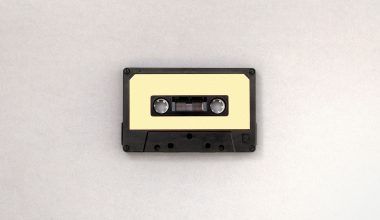Introduction: What is Vocal Practice and Why Does It Matter?
Singing is more than just making sounds; it’s an art, a skill, and for many, a dream. Whether you’re singing in the shower or performing on stage, vocal practice is the secret ingredient to sounding amazing. But what exactly is vocal practice? Simply put, it’s a routine to make your voice stronger, clearer, and more flexible. Think of it like a gym session—but for your vocal cords!
This blog is your ultimate guide to vocal practice. We’ll walk you through everything you need to know, from warming up your voice to advanced techniques that professional singers swear by. And don’t worry—we’ll keep things super simple and easy to follow!
Why is Vocal Practice Important?
Imagine a guitarist not tuning their instrument or an athlete skipping warm-ups. Sounds odd, right? Your voice is just like that guitar or athlete—it needs care and preparation to perform well. Regular vocal practice:
- Makes your voice stronger.
- Helps you sing high and low notes with ease.
- Protects your vocal cords from damage.
- Boosts your confidence when you perform.
Whether you’re a beginner or an experienced singer, vocal practice keeps your voice in top shape.
Chapter 1: Start with a Warm-Up (It’s Like Stretching for Your Voice)
Think of warming up as a little “hello” to your vocal cords. It wakes them up gently, so they’re ready to sing without strain.
Easy Warm-Up Exercises:
- Lip Trills: Press your lips together and blow air through them to make a “brrrr” sound. This helps loosen your vocal cords and relaxes your voice.
- Humming: Pick a simple tune and hum it gently. Start from a low note and go higher slowly.
- Sirens: Glide your voice up and down, like a firetruck siren. This stretches your range safely.
Chapter 2: Breathing is the Secret to Great Singing
Ever noticed how singers hold long notes effortlessly? That’s because they’ve mastered their breathing. Proper breath control is the foundation of singing.
How to Practice Breathing:
- Belly Breathing: Put your hand on your stomach and take a deep breath. Your stomach should expand, not your chest. This is how singers breathe.
- Controlled Exhalation: Breathe in deeply and let the air out slowly while counting. Start with a count of 5 and increase it as you get better.
- Hissing Exercise: Take a deep breath and release it as a soft “sss” sound, like a snake. This helps you control how much air you use.
Breathing exercises might feel a bit boring, but trust me, they make a huge difference!
Chapter 3: Protecting Your Voice – Be Kind to Your Vocal Cords
Your voice is your instrument, and it’s fragile. Here are simple ways to keep it safe and healthy:
- Stay Hydrated: Drink plenty of water throughout the day. Warm water is even better for your throat.
- Avoid Shouting: Shouting can strain your voice. Speak at a comfortable volume.
- Rest Your Voice: If you’ve been singing or talking a lot, give your voice a break. Silence is golden!
- Use Steam: Breathing in steam soothes your throat. Try it if your voice feels tired.
Chapter 4: Practice, Practice, Practice!
Now that you’re warmed up and breathing correctly, it’s time for the fun part: singing! But wait—it’s not just about singing your favorite songs. Structured vocal practice helps you improve faster.
How to Practice Singing:
- Scales and Arpeggios: These are the building blocks of music. Sing “Do-Re-Mi” up and down the scale to improve pitch accuracy.
- Songs with Challenges: Pick songs that push your limits—maybe a high note or a tricky rhythm.
- Record Yourself: Listening to recordings of yourself helps you identify areas for improvement.
Chapter 5: Expanding Your Range – Sing Higher and Lower
Many singers dream of hitting high notes effortlessly or reaching those deep, soulful lows. Expanding your vocal range is possible with patience and the right exercises.
Exercises to Expand Your Range:
- Octave Jumps: Sing a note and then jump an octave higher. Practice moving smoothly between the two.
- Falsetto Training: Practice singing in a light, airy voice to strengthen your upper range.
- Low Note Practice: Sing low notes softly and gradually add volume. This strengthens your lower range.
Chapter 6: Singing Different Styles
Every genre of music has its own challenges. Here’s how to adapt your vocal practice for different styles:
- Pop: Focus on riffs and runs.
- Classical: Perfect your breathing and tone.
- Rock: Practice belting safely to avoid strain.
- Jazz: Work on improvisation and unique vocal textures.
Chapter 7: Building a Daily Vocal Practice Routine
Consistency is key when it comes to improving your voice. Here’s how to create a routine:
- Morning Warm-Ups: Start your day with gentle hums or lip trills.
- Focused Practice: Dedicate 30 minutes to learning new techniques or songs.
- Evening Cool-Down: End your day with soft singing to relax your voice.
Chapter 8: Overcoming Vocal Challenges
Let’s face it—singing isn’t always easy. Here’s how to tackle common problems:
- Cracking on High Notes: Warm up thoroughly and approach high notes gently.
- Running Out of Breath: Practice breathing exercises regularly.
- Pitch Problems: Use a piano or app to practice matching notes.
Remember, every singer faces challenges. It’s part of the journey!
Chapter 9: Tools to Help You Practice
You don’t have to go it alone! Here are some tools to make your vocal practice more fun and effective:
- Singing Apps: Use apps like Smule or Yousician for guided lessons.
- Piano or Keyboard: Great for practicing scales and pitch.
- Metronome: Helps you stay on rhythm.
Chapter 10: Make Vocal Practice Fun!
Vocal practice doesn’t have to feel like homework. Here are some ways to keep it enjoyable:
- Sing Along to Your Favorite Songs: It’s practice, but it doesn’t feel like work!
- Join a Choir: Singing with others is fun and improves your skills.
- Set Goals: Whether it’s mastering a high note or performing live, having goals keeps you motivated.
Conclusion: Unlock Your Singing Potential
Vocal practice is your ticket to becoming a better singer. It’s not about being perfect; it’s about enjoying the process and seeing yourself improve. With the tips and techniques in this guide, you’ll not only sound amazing but also feel confident every time you sing.
Related Articles:
For further reading, explore these related articles:
- What Is an EP in Music? A Friendly Guide for Beginners
- Why Song Mastering Services Are the Key to Perfecting Your Music
- Discovering the Easiest Musical Instrument to Learn: A Beginner’s Friendly Guide
For additional resources on music marketing and distribution, visit Deliver My Tune.






